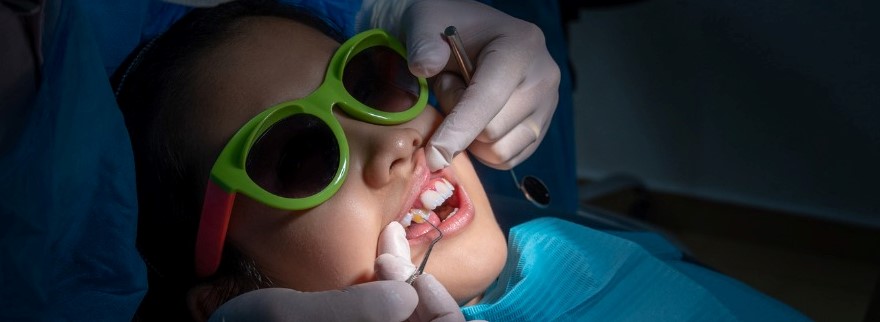The idea of being sedated for a dental procedure is already scary for some adults. But when your child needs anesthesia for a long, painful, or complicated dental procedure it can be downright worrisome.
A parent wants to know exactly what’s going on with their kids at all times, but anesthesia is a specialized and exact science that may seem like a complete mystery to most people. So, we’re here to demystify dental anesthesia for you and your children so you have less to worry about and more to smile about.
See available plansDental anesthesia and sedation
For some painful dental procedures, your child’s dentist may need to numb the area in and around your child’s mouth. But longer and more complex procedures may require that your child be completely still and that their reflexes be turned off.
These kinds of procedures require general anesthesia, in which a pediatric anesthesiologist uses specific medications to completely sedate your child. Your child would be completely asleep and unaware during the duration of the procedure.
Is it safe?
The American Academy of Pediatrics sets the standard for the use of anesthesia in all young patients, including in dental procedures. They are responsible for studying, analyzing, and evaluating current standards and methods to ensure safety.
Any time a child is under deep sedation or general anesthesia, two trained medical professionals must be present in the operating room. Both must be trained to provide life support should there be any life-threatening problems. With two professionals in the room, one will be doing the actual procedure and the other is a trained professional responsible for observing the patient according to Healthychildren.org.
Types of sedation
Nitrous Oxide:
You may know this as laughing gas. It is the least invasive of all the sedation methods and is administered as a gas, alongside oxygen, that relaxes your child but doesn’t put them to sleep.
Mild and moderate sedation:
These are usually a combination of medications used for older children and adults to make them calm and sleepy but still slightly aware. This method may be used if the dentist still needs to communicate with the patient in some way during the procedure, but a patient may not remember any of it later.
Deep sedation:This type of sedation is most often achieved through intravenous (IV) medications. Your child may still make noises or move slightly, but they are asleep. This is a type of sedation that would require the presence of a second observer checking the child’s oxygen levels, blood pressure, and more.General anestesia:
This is the most involved form of sedation. The patient will be completely unconscious to the point where they will not be moving or making noise. This is used for the most invasive procedures like extensive jaw surgeries and an independent observer will be present.
General anesthesia and sedation: a play-by-play
Before the procedure
General anesthesia may not be right for a child with existing health issues. You and your dentist will discuss your options and safety as you plan for the procedure.
There are some guidelines and rules to follow before you take your child to the dentist the day of the procedure. Most of these rules say what you can and cannot eat and drink before the procedure. Most anesthesia is usually done on an empty stomach.
Your treating provider’s office will provide thorough oral and written instructions before the procedure.
During the procedure
The day of the procedure can be stressful or scary for both you and your child. In most cases, you should be able to be by your child’s side as the sleep medication is first administered. Your child may also have a blanket or stuffed animal at this phase, as well.
Once your child is asleep, the IV medication will be administered, and the procedure will begin. A trained observer will be monitoring your child’s breathing, heart rate, and other health signs to ensure safety throughout the procedure.
After the procedure
You and your child have made it! Your dentist should have some recovery procedures set up to make this phase a little more comfortable for both you and your child.
The medications may take some time to wear off. Your child’s mouth may remain numb for hours and their throat may be sore. In most cases, you’ll need to wait a few hours to give your child soft, solid food, as well.
It’s normal for your child to feel a little dizzy and nauseous. Your child should be expected to rest after the procedure is complete.
Preparing you and your child for dental anesthesia
Having any major medical procedure done can be stressful and scary – especially if your child is the one going under.
Talk to your child first and let them know it’s normal to have questions and be scared. Make sure your child has a comfort item like a blanket or stuffed animal when they arrive at the dentist. And remind them that you’ll be there as they fall asleep and when they wake up.
Dental anesthesia is common and can be used in major dental procedures for both adults and children. Knowing what to expect will set you and your child up for success.
Looking for a dental plan?
See available plans
Explore related topics

Children's Oral Health

Fluoride and children: FAQs

Tips for Taking Your Special Needs Child to the Dentist


